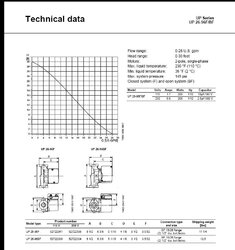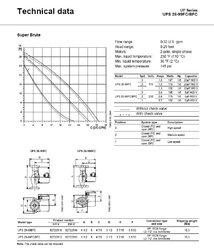Hi guys,
I've been all over the Grundfos web site trying to find a pump curve chart and I've also Googled the Internet and not found what I was looking for. You guys have been so much help (thank you!) that I thought I would ask here.
I have an outdoor wood boiler located about 275 feet from the furnace in my house. 1 1/4 Thermopex.
Central Boiler provided a really nice pump selection chart that gives pump model along with GPM through 1 1/4 pex at various distances.
What I was looking to do was to compare Grundfos pumps to the Taco. My chart shows on a 600 foot round trip loop that an 014 taco will produce 8.26 gallons per minute. Ideally, I'd like to achieve a GPM over 10 if its possible to do so with my 1 1/4 pex at that distance. I have one 90 degree 1 1/4 fitting on the supply and one on the return. The only Grundfos charts I've found list the distance column as "H" which I assume means head. But they do not show GPM by pex size.
I'd also like a Grundfos pump that has multiple speed options so that I can fine tune the system.
Anyone have a recommendation on a Grundfos pump model would meet my needs? Anyone have a chart or computer program that can calculate the GPM of the pump?
Thanks!
I've been all over the Grundfos web site trying to find a pump curve chart and I've also Googled the Internet and not found what I was looking for. You guys have been so much help (thank you!) that I thought I would ask here.
I have an outdoor wood boiler located about 275 feet from the furnace in my house. 1 1/4 Thermopex.
Central Boiler provided a really nice pump selection chart that gives pump model along with GPM through 1 1/4 pex at various distances.
What I was looking to do was to compare Grundfos pumps to the Taco. My chart shows on a 600 foot round trip loop that an 014 taco will produce 8.26 gallons per minute. Ideally, I'd like to achieve a GPM over 10 if its possible to do so with my 1 1/4 pex at that distance. I have one 90 degree 1 1/4 fitting on the supply and one on the return. The only Grundfos charts I've found list the distance column as "H" which I assume means head. But they do not show GPM by pex size.
I'd also like a Grundfos pump that has multiple speed options so that I can fine tune the system.
Anyone have a recommendation on a Grundfos pump model would meet my needs? Anyone have a chart or computer program that can calculate the GPM of the pump?
Thanks!




